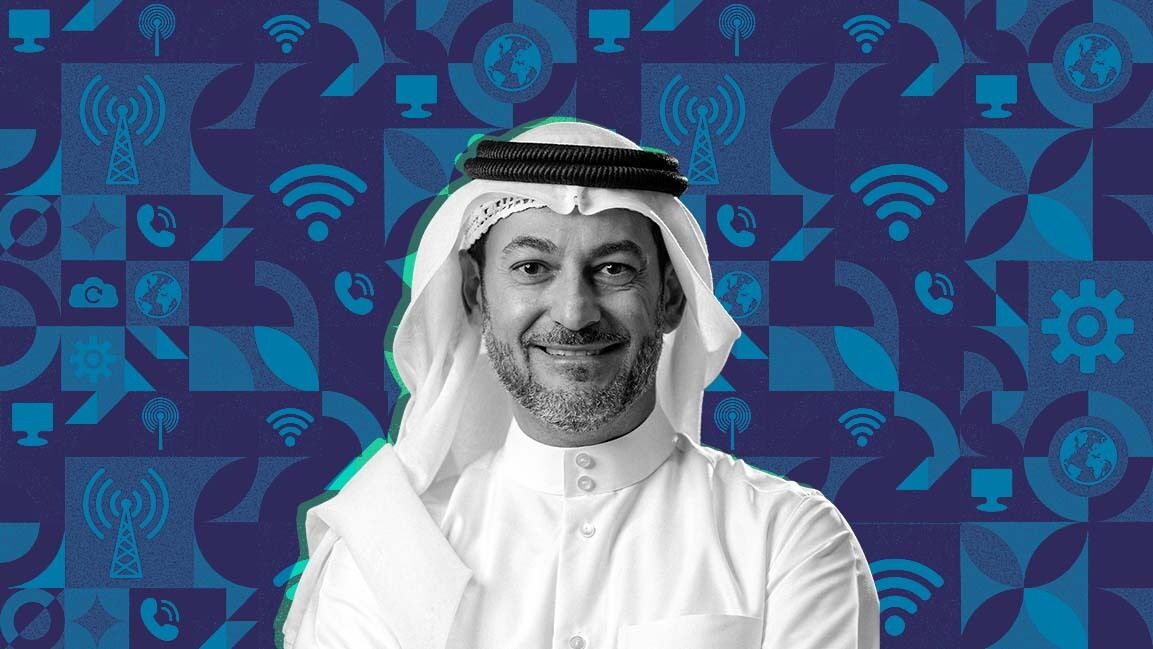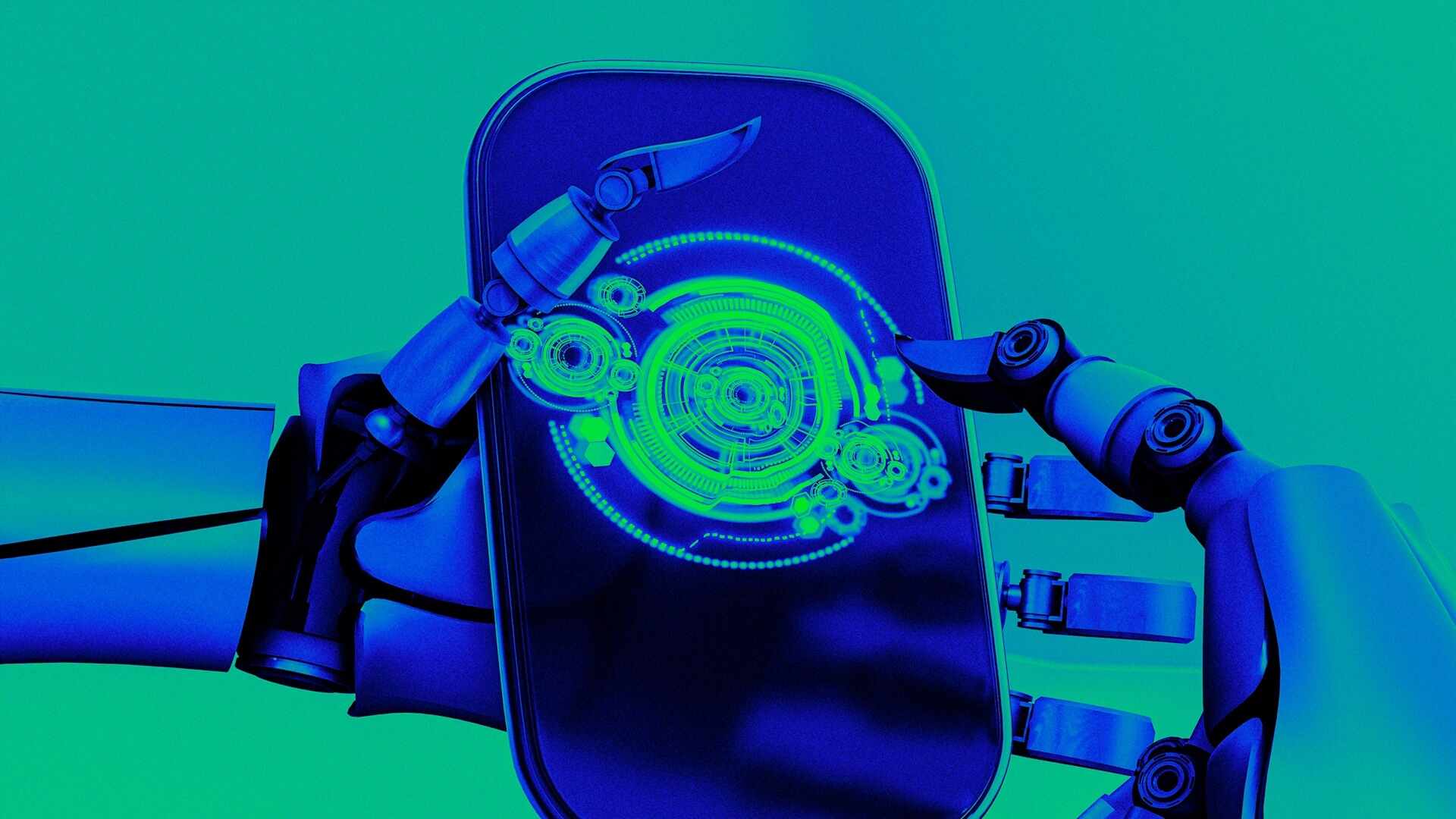- | 9:00 am
Aziz Aluthman Fakhroo is making Ooredoo a digital infrastructure provider that shapes economies
What Ooredoo’s digital pivot reveals about the future of telecom

Telecom doesn’t usually get the credit or focus it deserves. It’s easy to forget the infrastructure that holds everything together until it doesn’t.
But as AI labs, cloud platforms, banks, and streaming services scale up across the Middle East, demand for low-latency, high-speed connectivity is accelerating. Data centers are multiplying. At the center of it all is the same telecom sector that once powered only phone calls.
In Qatar, this need is becoming tactical. The country is quietly expanding its digital footprint by scaling data-center infrastructure, anchoring new subsea cable routes, and deploying private 5G networks for industrial applications. The sector is becoming integral to broader national digital development initiatives. Ooredoo Group has been steadily expanding its reach across digital infrastructure, taking stakes in data centers, subsea cables, and AI partnerships. While it continues to operate its core telecom networks, the company is now positioning itself as a broader digital enabler, moving into areas that were once well beyond its traditional scope.
In conversation with Fast Company Middle East, Ooredoo Group CEO Aziz Aluthman Fakhroo shares how the company is navigating this shift and what it means to build digital infrastructure at scale across a diverse region.
BEYOND THE SIGNAL
Ooredoo is working to reposition itself as a digital infrastructure provider, expanding beyond its role as a telecom operator. “We’re building a future-proof business by investing in five strategic verticals: telecom operations, towers, data centres, subsea cables, and fintech,” says Fakhroo. These are intended to drive innovation, scale effectively, and create lasting value across the digital ecosystem.
The company has been implementing this strategy in recent years, making structural changes and entering new areas of business. “By moving away from the conventional, vertically integrated model, we’ve created a more agile, future-ready structure,” he notes. The shift addresses changing market conditions and increased demand for digital services.
“Our ambition is to be the trusted backbone of the region’s digital future and drive sustainable growth by enabling the next generation of innovation,” Fakhroo adds.
At Ooredoo, innovation is seen as more than the introduction of new tools or platforms. “We define innovation not just as introducing new technologies, but as the ability to reimagine how we connect people, businesses and communities, especially in a company with a proud legacy like ours,” explains Fakhroo This perspective is part of its broader effort to shift from being a telecom operator to a digital infrastructure provider.
The approach has informed a series of investments and technology rollouts across the group. Ooredoo was among the early adopters of 5G in the region and has since expanded its focus to include artificial intelligence, the Internet of Things, subsea cables, and financial technology. “We’re constantly considering what’s going to drive the global economy in the future, and we position ourselves early,” he adds.
Two recent initiatives highlight this approach: the spin-off of Ooredoo’s data center operations and strategic partnerships with Nvidia and Iron Mountain. The collaboration with Nvidia provides access to advanced AI chips, while Iron Mountain contributes expertise in data center management. These alliances are essential to strengthening Ooredoo’s capabilities in AI development and deployment.
THE UNDERESTIMATED OPPORTUNITY
One of the most overlooked opportunities in the MENA digital economy lies in the evolving role of telecommunications companies and their potential to build far deeper relationships with consumers and businesses.
“The region’s telecommunications companies have an unprecedented opportunity to form deeper relationships with their customers at both a B2C and B2B level,” says Fakhroo.
Connectivity is now fundamental, but it marks just the beginning. With the rise of AI, IoT, and cloud-based services, telecom companies are evolving from basic data providers to enablers of personalized digital experiences. Ooredoo is embracing this shift by leveraging AI, cloud, and 5G to create greater value, supporting smart homes and driving digital ecosystems in healthcare, education, and entertainment for individual users and businesses.
“Over the past year, we’ve seen the telecommunications and digital infrastructure landscape change at pace, with the expansion of connectivity as well as increasing use of AI and cloud services,” he says. “We’ve continued to develop with it, ensuring we leverage new technologies to deliver real impact for our customers.”
A key example is Ooredoo’s partnership with Nvidia, which aims to support the advancement of AI in the region. Through this collaboration, governments, enterprises, and startups gain access to Nvidia’s full-stack AI platform, enabling them to enhance their innovation capabilities and remain competitive.
Ooredoo is also growing its data center operations through its Syntys platform. The company has secured additional financing and formed strategic partnerships to deliver advanced services to hyperscalers and enterprises. This expansion is especially important in markets such as Qatar, Oman, and Kuwait, where demand for sovereign, locally hosted cloud and AI infrastructure is rising. The focus is on building the digital foundations to support innovation and future growth.
Ooredoo is making strides in the 5G space through a strategic partnership with Nokia. The partnership aims to develop and deploy private 5G networks tailored to specific markets and enterprise needs across the region. The impact of this collaboration is already visible in countries like Tunisia and the Maldives, where 5G coverage has expanded to reach 80% of the population, significantly enhancing connectivity.
On the consumer side, Ooredoo is leveraging artificial intelligence to elevate its customer service experience. By integrating AI into its platforms, the company is delivering faster, more responsive support, offering personalized recommendations, streamlining query resolution, and improving user satisfaction.
The demand for secure, low-latency, and scalable digital infrastructure on the enterprise side is rising. As MENA positions itself as a global data hub, with initiatives like FIG and regional cloud expansions, telecom players have a unique chance to become key partners to hyperscalers, startups, and multinationals. “The companies that move fastest to offer integrated solutions from cloud and AI computing to cybersecurity will define the region’s digital trajectory. We’re at the forefront of that, and it’s an exciting opportunity for those willing to capitalize on it,” Fakhroo emphasizes.
FUTURE-PROOFING REGIONAL CONNECTIVITY
The Fibre in Gulf (FIG) project marks a significant milestone for Ooredoo and the region.
The new subsea cable system, covering seven countries, increases bandwidth and brings strategic geopolitical and economic benefits. It is designed to provide a low-latency, secure route connecting Europe and Asia, with up to 24 fibre pairs and a capacity of 720Tbps. The system aims to improve regional network reliability and security while supporting the growing demand for data and enabling seamless connectivity for hyperscalers, AI providers, data centers, and telecom operators.
More broadly, the FIG project aligns with Ooredoo’s goal of expanding its role in regional digital infrastructure. “The key unique selling point is that we’re creating a new and secure route for data connectivity between Europe and Asia while connecting the region to these two major hubs,” Fakhroo adds. According to Ooredoo, the initiative is expected to support the broader adoption of cloud services and big data, and contribute to ongoing digital transformation efforts in the region.
Ooredoo’s long-term vision for the FIG project includes making the subsea platform accessible to global tech companies. The infrastructure has been developed with the growth needs of hyperscalers and other large-scale users in mind. The company has collaborated with partner hyperscalers and major international carriers to ensure the system is equipped to meet future demands.
Beyond the FIG system, Ooredoo continues to expand its subsea strategy. “Subsea cables have been a focus area for the Group for a while now, and last year we signed an agreement to land the 2Africa Cable System in Barka and Salalah,” Fakhroo highlights. At 45,000 kilometers, 2Africa will be the largest subsea cable system in the world. This move strengthens the company’s position in supporting global connectivity and creating new digital opportunities for the Middle East.
CLOSING THE ACCESS GAP
Building trust and ensuring security are critical to advancing financial inclusion through mobile payments. “Trust is one of the cornerstones of any payment system, and it is crucial in the drive to broader financial inclusion via mobile payments,” says Fakhroo.
Historically, concerns around fraud, limited customer recourse, and data breaches have created barriers for users, particularly in underserved communities. “As an industry, it is vital we demonstrate the strength and security of our systems, to encourage those previously underserved communities to embrace mobile payments, resulting in wider financial inclusion,” he adds.
Ooredoo has prioritized data protection and transaction security, implementing measures to safeguard customer information and finances. A recent partnership with Evina, a global leader in mobile payment security, supports this commitment. Through this collaboration, Ooredoo is enhancing transaction security by integrating AI-powered fraud prevention technology.
This emphasis on security fits into Ooredoo’s wider focus on digital inclusion, which it identifies as a key part of its ESG strategy. “Digital inclusion is the cornerstone of our ESG strategy. We invest in infrastructure, technologies, and services to bridge the digital divide, enhancing inclusion and accessibility for traditionally underserved communities,” Fakhroo explains. One example is its investment in mobile broadband infrastructure to improve access in rural and remote areas. In Palestine, for instance, the company deployed mobile broadcasting units, or “Cells on Wheels,” to help restore service during periods of disruption.
Ooredoo’s efforts around inclusion extend beyond infrastructure to digital literacy and education. In Palestine, it partners with NGOs and institutions to promote digital skills, while in Tunisia, it is working with UNICEF to establish a digital teaching lab for adolescents to support continued education and vocational training. “We see digital literacy and inclusion as essential to powering future economic prosperity,” he says.
In Oman, the company has launched what it describes as the region’s first Sign Language Customer Service Centre to improve accessibility for hearing-impaired customers. These programs reflect an approach to inclusion that combines education, accessibility, and targeted support to encourage broader participation in the digital economy.
BUILDING FOR A DIGITAL DECADE
With operations across the Middle East, North Africa, and Asia, Ooredoo frames innovation as a core business approach. “While it is essential to have cohesion across our portfolio, we remain flexible and agile across markets,” says Fakhroo. The company adapts its innovation strategy to suit local conditions, shaped by varying market needs and regulatory frameworks. Its data center rollout, for example, began in markets such as Qatar, Kuwait, Oman, and Tunisia, areas identified as having strong potential, before expanding further based on lessons from those early efforts.
Looking ahead, the company sees its role extending beyond telecommunications.
“In ten years, we’d like Ooredoo to be known as a leading digital infrastructure provider, helping businesses and customers thrive in the ever-evolving digital environment, from AI to mobile payments and beyond,” he says. While traditionally known for its telecom services, the company now focuses on building infrastructure supporting broader digital growth in the region, including investments in data centers and subsea cable systems.






































